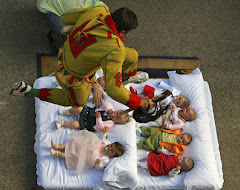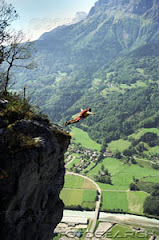 Reading is such a funny activity...it never ceases to fascinate me on how you can be going over subject matter of one thing, and realize as you're going through it how it applies to something completely different.
Reading is such a funny activity...it never ceases to fascinate me on how you can be going over subject matter of one thing, and realize as you're going through it how it applies to something completely different.Books covering the subject matter of urban planning are particularly interesting in this regard, especially when they focus on the philosophy of the field.
I want to share an excerpt from Howard Kunstler, the author of The Geography of Nowhere and its follow-up, Home from Nowhere...this is from the latter.
You'll see, as you go through it, how what he's saying applies to what we're seeing right now in our health care debate; in terms of the conservative perspective vs. the liberals ones...and the question about whether we can tap into our better angels.
Starting from p. 37, Chapter 2: The Public Realm and the Common Good:
"Main Street USA in America's obsolete model for development---we stopped assembling towns this way after 1945. The pattern of Main Street is pretty simple: mixed use, mixed income, apartments and offices over the stores, moderate density, scaled to pedestrians, vehicles permitted but not allowed to dominate, buildings detailed with care, and built to last (although we still trashed it). Altogether it was a pretty good development pattern. It produced places that people loved deeply. That is the reason Main Street persists in our cultural memory. Many people still alive remember the years before World War Two and what it felt like to live in integral towns modeled on this pattern. Physical remnants of the pattern still stand in parts of the country for people to see, though the majority of Americans have moved into the new model habitat called Suburban Sprawl.
For all its apparent success, Suburban Sprawl sorely lacks many things that make life worth living, particularly civic amenities, which Main Street offered in spades. Deep down, many Americans are dissatisfied with suburbia---though they have trouble understanding what's missing---which explains their nostalgia for the earlier model. Their dissatisfaction is literally a dis-ease. They feel vaguely and generally un-well where they are. Nostalgia in its original sense means homesickness. Americans essay to cure their homesickness with costly visits to Disney World. The crude, ineffective pallaitives they get there in the form of brass bands and choo-choo train rides leave them more homesick and more baffled as to the nature of the their disease than when they arrived---like selling chocolate bars to someone suffereing from scurvy---and pathetically, of course, they must return afterward to the very places that induce the disease of homesickness.
Historically Americans have a low regard for the public realm, and this is very unfotunate because the public realm is the physical manifestation of the common good. When you degrade the public realm, as we have, you degrade the common good.
The public realm is furnished with some nonphysical equipment in the form of laws, beliefs, social agreements, and preeminently language, which enables all these other mechanisms to operate. One might call language the basic operating system of the public realm, without which all the other applications needed to run human society would not function. When you degrade this equipment, this language, as we have in our time, then you impair the ability of a group of people incorporated as the republic to think about the common good."





























No comments:
Post a Comment